Home Made Cat Food
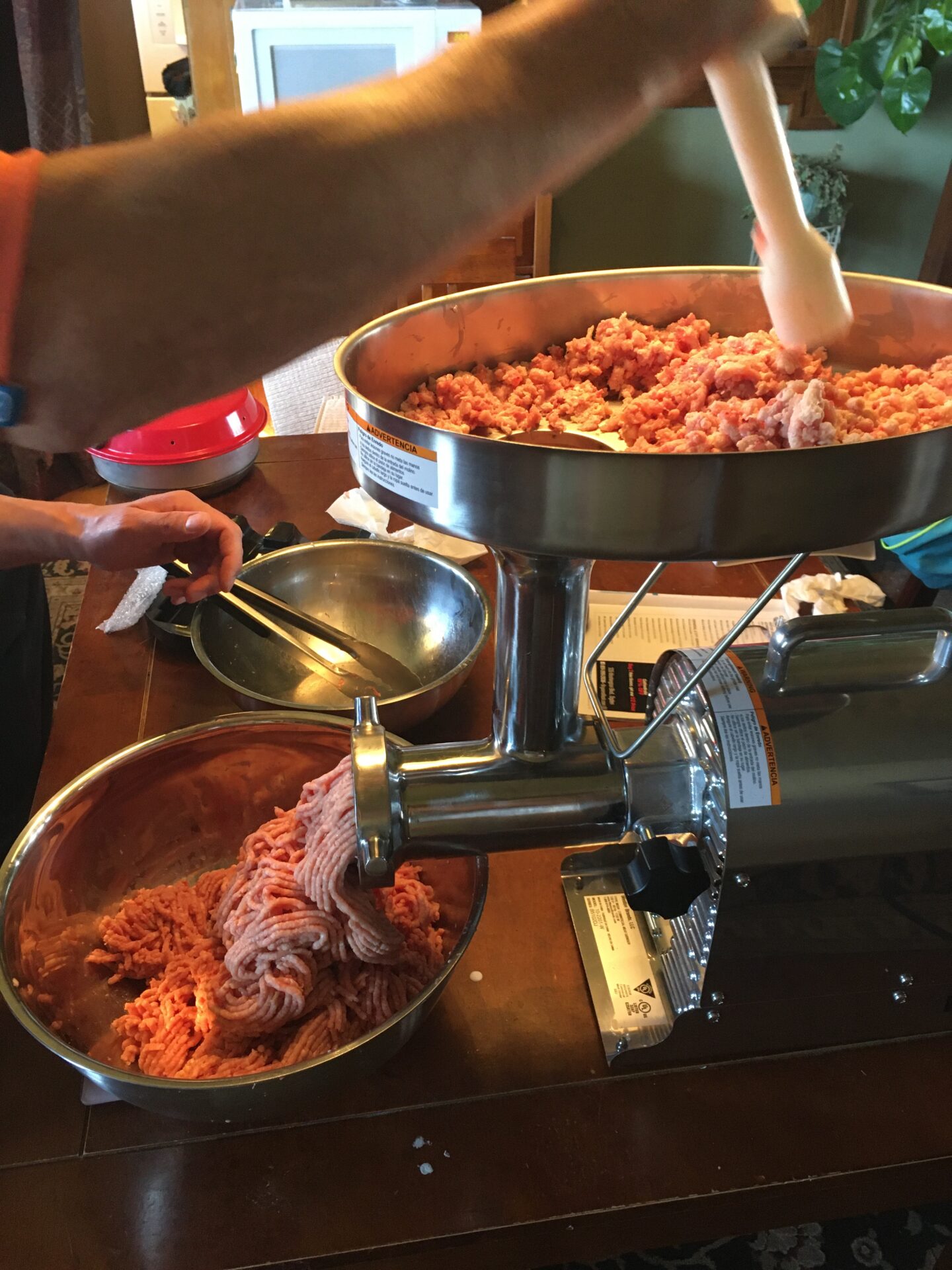
This page is a full in depth explanation and walk through.
NO PROCESSED MEAT MEALS OR RENDERED MEALS OF ANY KIND
NO CORN, SOY, WHEAT, OR WHEY PROTEIN
NO GLUTEN, GRAINS, OR FILLERS
NO ARTIFICIAL PRESERVATIVES, FLAVORS, OR DYES
NOT Recommended for Chronic kidney disease kitties.
Word of Caution
Rabbit Diet Vitamin Deficiencies
- Never Withhold food from a cat. If a cat doesn’t like the smell of food no amount of starving them will ever make them eat. Starving a cat for even 24 hours can put them into organ failure.
- Do not add supplements prior to grinding, cutting, or cooking the meat.
- Doing this will destroy the additives molecular composition. Taurine.
- Taurine is water-soluble and will be lost if the meat is cooked in water and the water is then discarded
- Taurine Melting point is 644 degrees F.
- Never thaw frozen RAW pet food in the microwave or at room temp. This can destroy the natural and added supplements as well as acting as a catalyst for bacterial growth that can be harmful to your pet.
- Compare and contrast cat food recipes, Ingrediants, and supplement additive mixtures.
- Some cat food pre mixtures use whey protein. As a lactose intolerant human being my body can’t process any amount of whey protein because it has trace amounts of lactose. This is also true for cats as they can’t process the lactose from cows milk and in some cats it can even cause an allergic reaction. I have chosen to avoid this additive.
- Using Pre ground meat without the bone is not a viable long term solution and will lead to harming and damaging the health of your animals. For best results use the pre mixed supplements as a trial before buying a meat and bone grinder.
- Raw Fish should never be the primary protein as it is dangerous to cats and can lead to thiamine deficiency. Fish can also be addictive to cats and they can refuse to eat other protein sources.
- I have chosen to partially cook my homemade cat food to prevent any transmission of food born diseases.
Sample Batch No Meat Grinder Required
Sample pack of pre mix supplements. This method is great if you want to test the waters of homemade cat food before buying a meat grinder but it is not not recommended for long term feeding.
My Natural Cat Plus Chicken Liver 5.4oz. Makes 3lbs of food!
This product most closely follows the 3 homemade recipes I have reviewed and have chosen to use, see full recipe in this post.

- My Natural Cat Plus Chicken Liver 5.4 oz $18.75+ $10.25 S&H+tax
- Alnutrin $10.56 for cats- must add chicken liver, & bone ground meat
- Renewed Pet $20.00 3oz – must add chicken liver
- EZ Complete $1.00 (US) 4.5 oz – contains pancreas
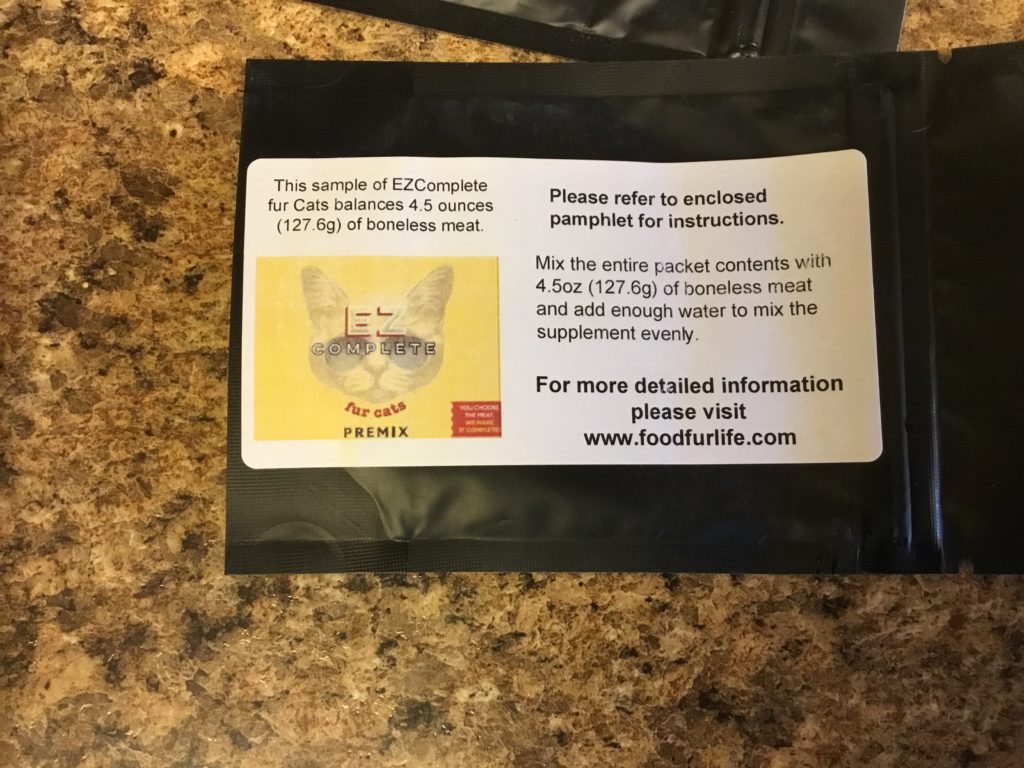
- TCFeline with Chicken Liver 4.2oz – whey protein
- Know Better – whey protein
Follow the instructions for the brand of supplements with the acceptation of cooking the chicken before adding to the supplements.
Sample Cooking Instructions
Cook boneless skinless Chicken 350 degrees for 20min. Remove from oven and let cool. Now mix the supplements, water and fish oil in a separate bowl. Once the chicken thighs cool chop it into chunks before adding it to a food processor, I puréed 5 thighs and saved the largest thigh to chop into chunks. Pour any liquid from the chicken baking dish into the bowl with the chopped and puréed meat, this liquid contains essential nutrients. The chunky meat helps with tooth care and strengthening. Now mix the supplements and meat together thoroughly. If kitty is a picky eater try one of my 3 recommended strategies for transitioning to a new food.
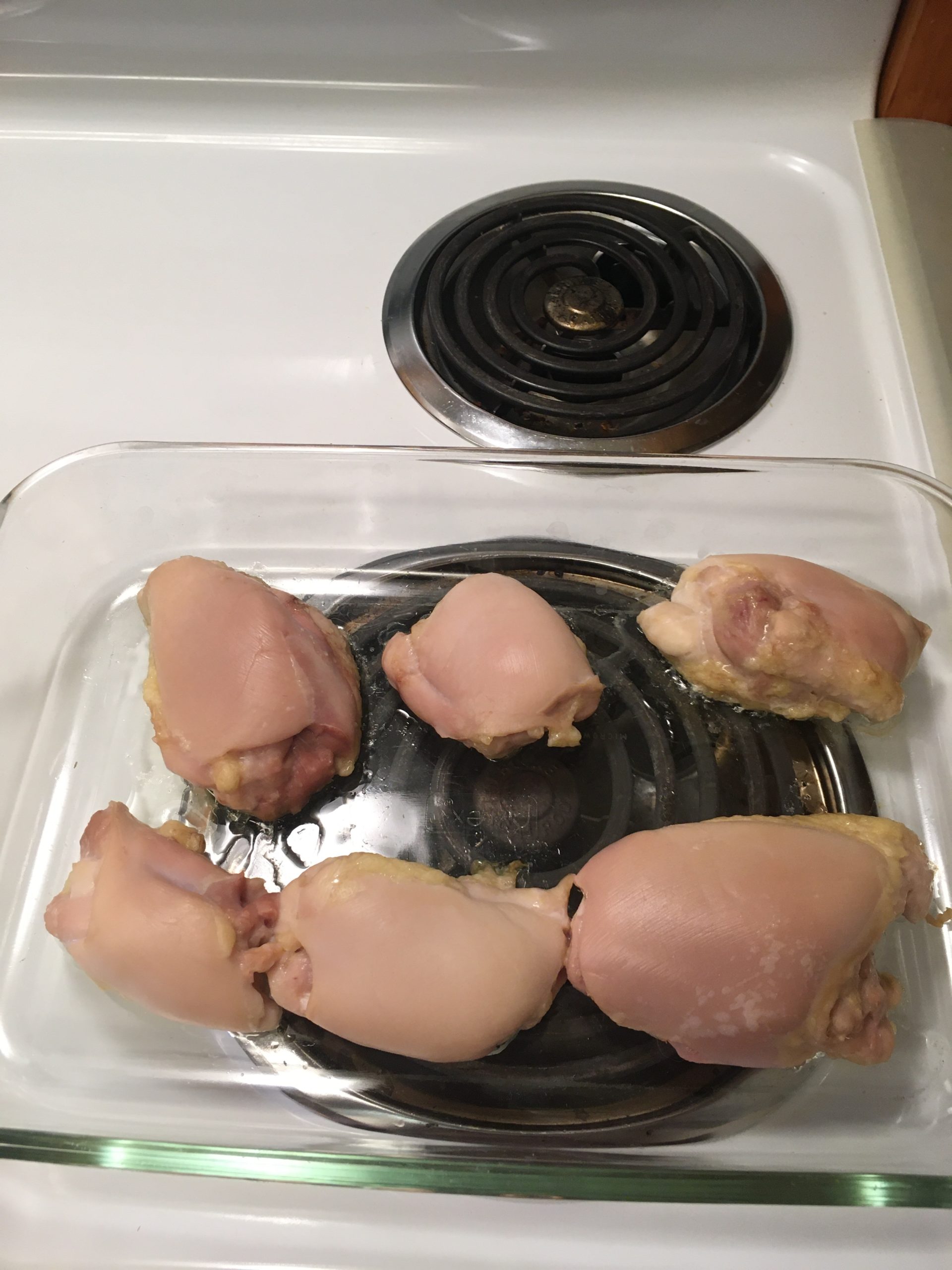
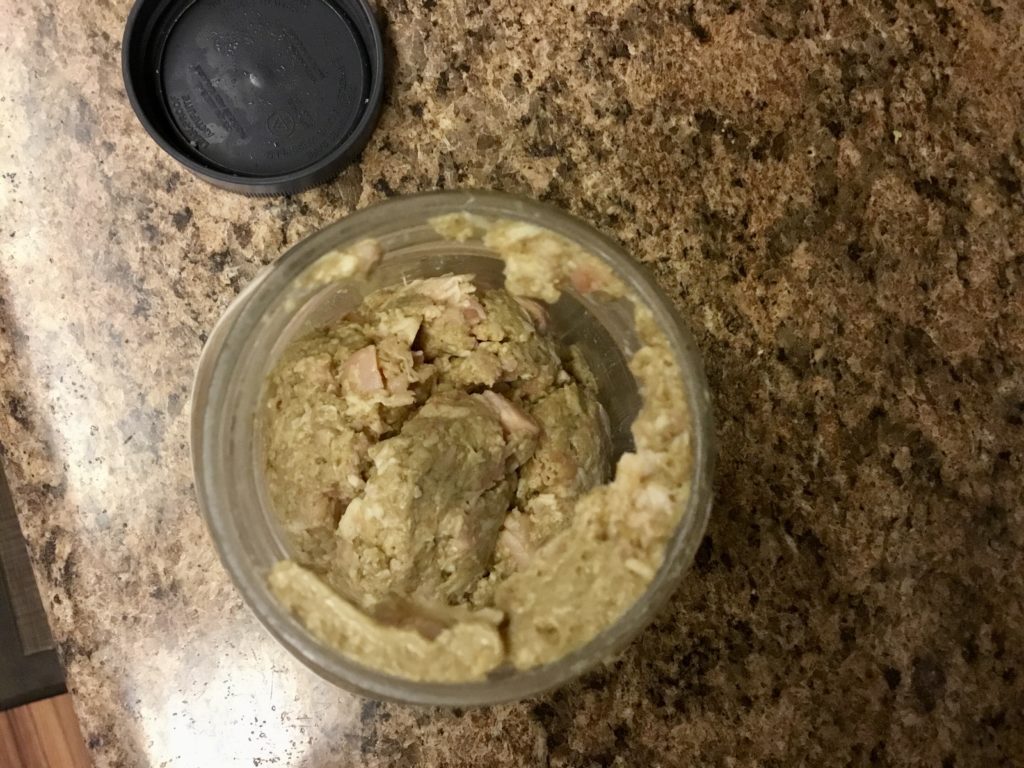
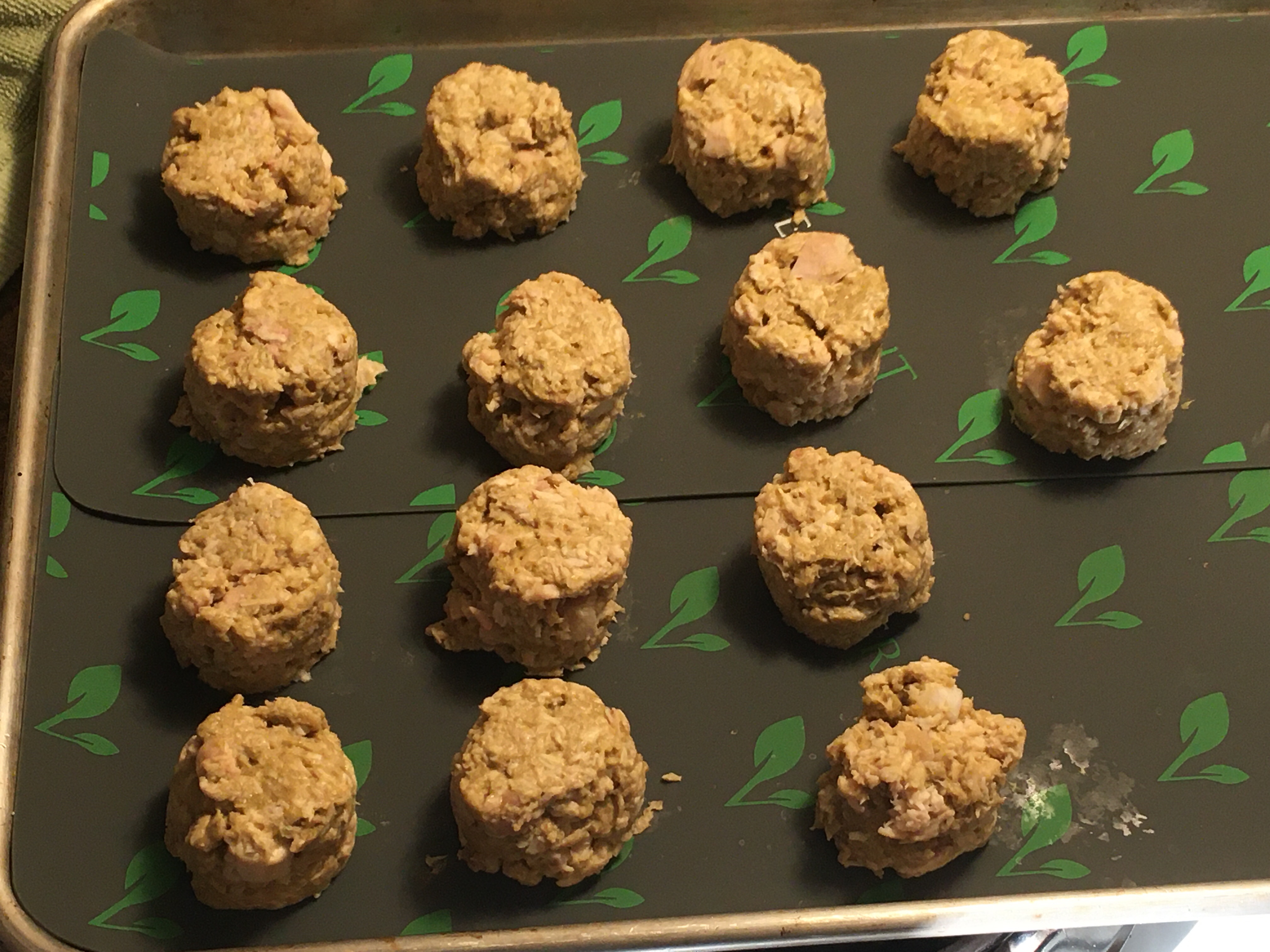
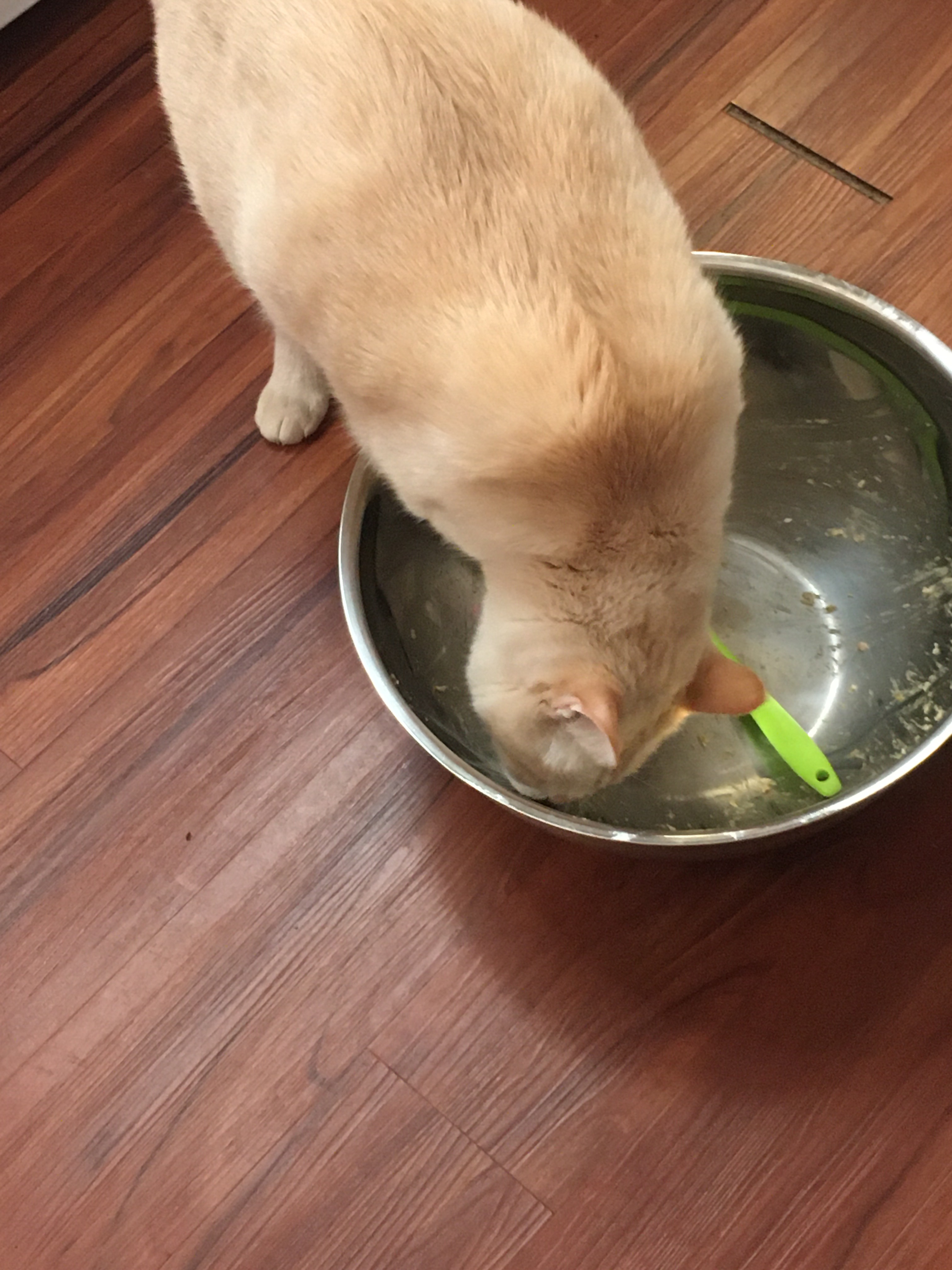

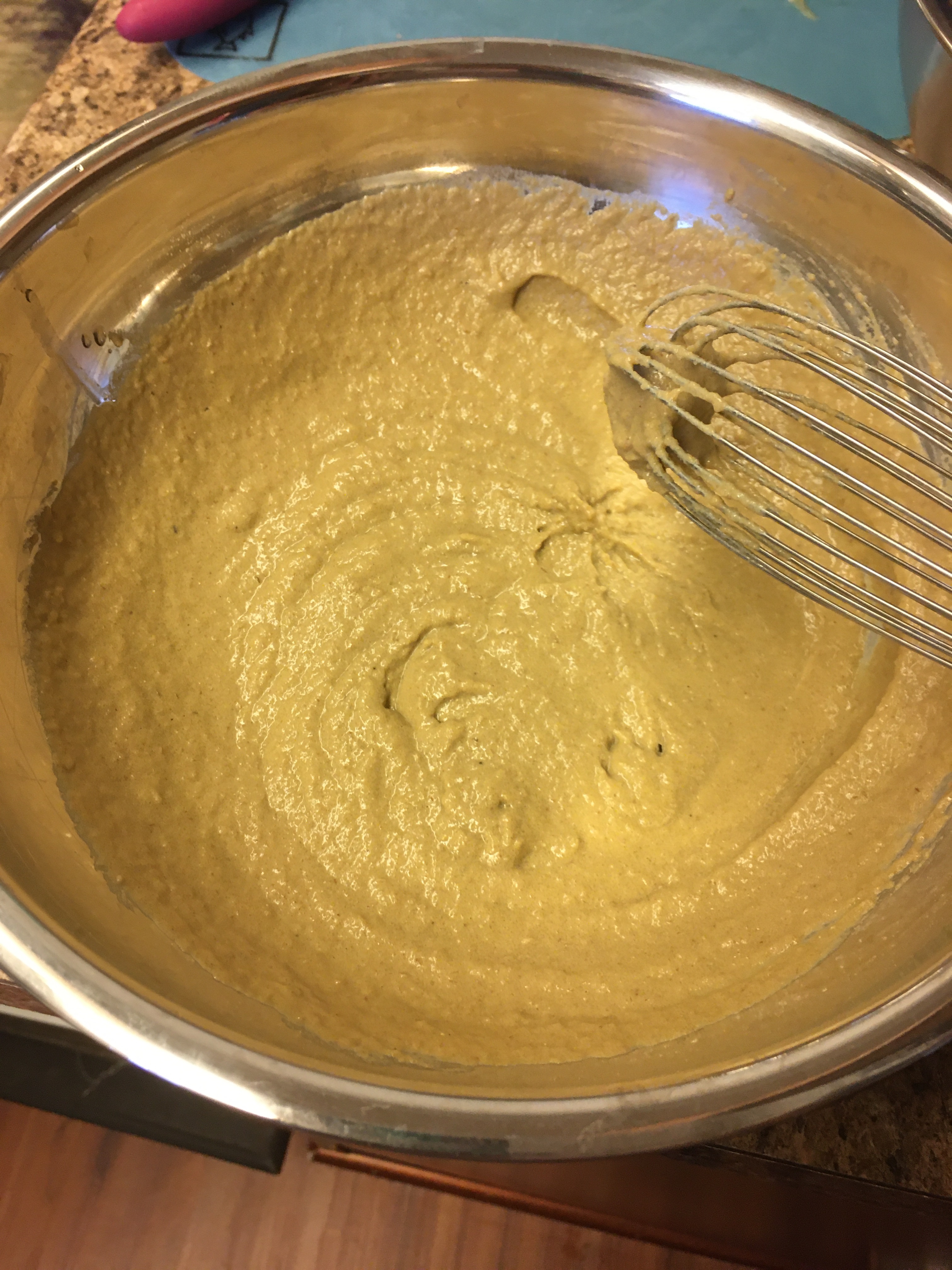
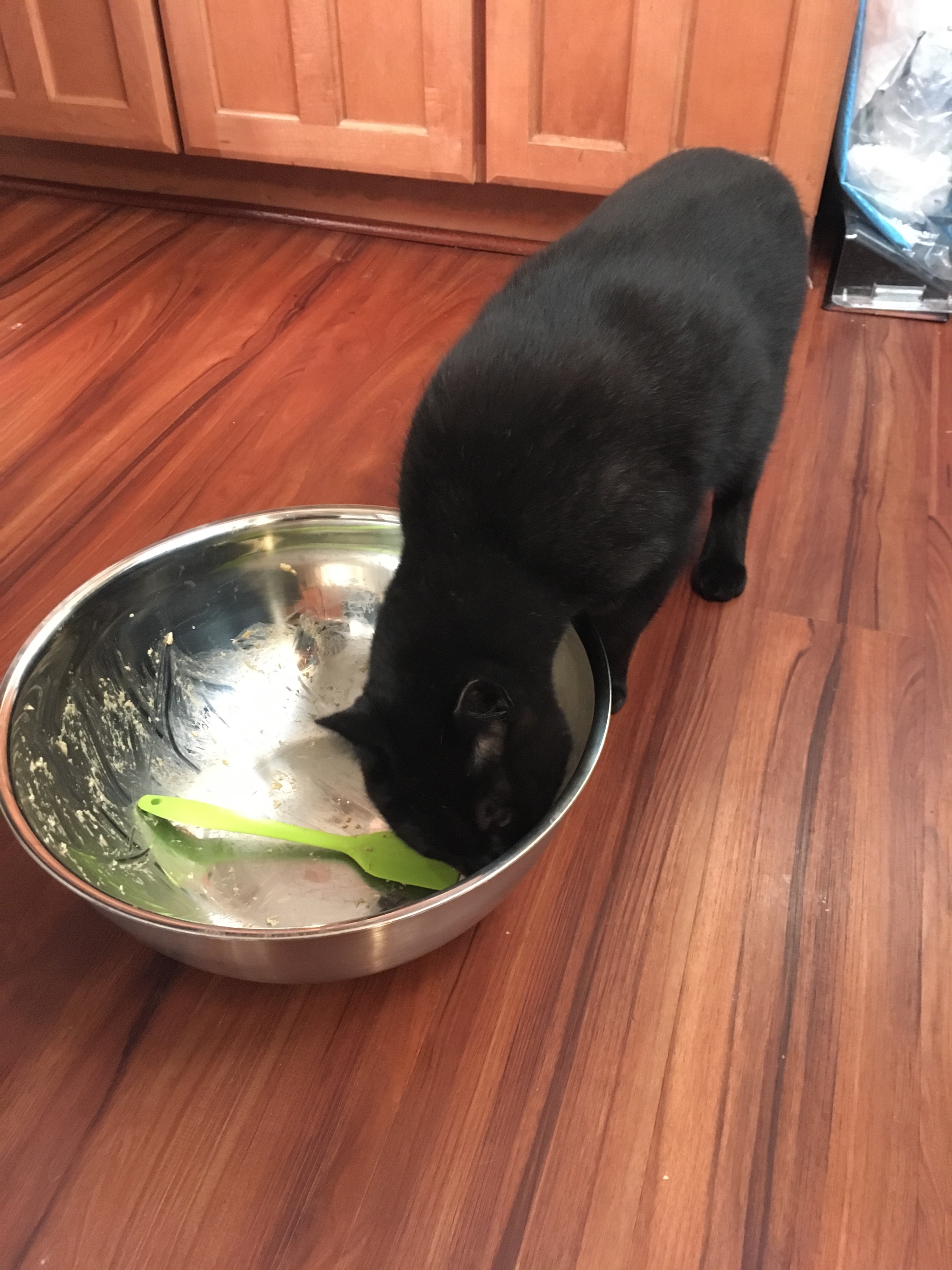
Transitioning Food & Probiotics.
Transitioning cat food to homemade food is best done with scheduled feedings and is not recommended for free feeding. Any uneaten food should be picked up within 20-30 minutes. Transitioning to new food should take place over a week and can take longer. Transitioning too quickly can cause diarrhea.
If kitty has diarrhea, vomiting, becomes lethargic or is showing signs of discomfort give a 1-2 day break from the new food and start over with a smaller amount of new food mixed with the old food. Food Fur Life Recommends the following;
Day #1. Mix in 1/2 tsp of new food with old food at meal times
Day #2. Mix 1 tsp of new food mixed with old food at meal times
Day #3. Increase by 1/2 tsp of new food per day at meal times and mix with the old food until you have completely transitioned to new food.
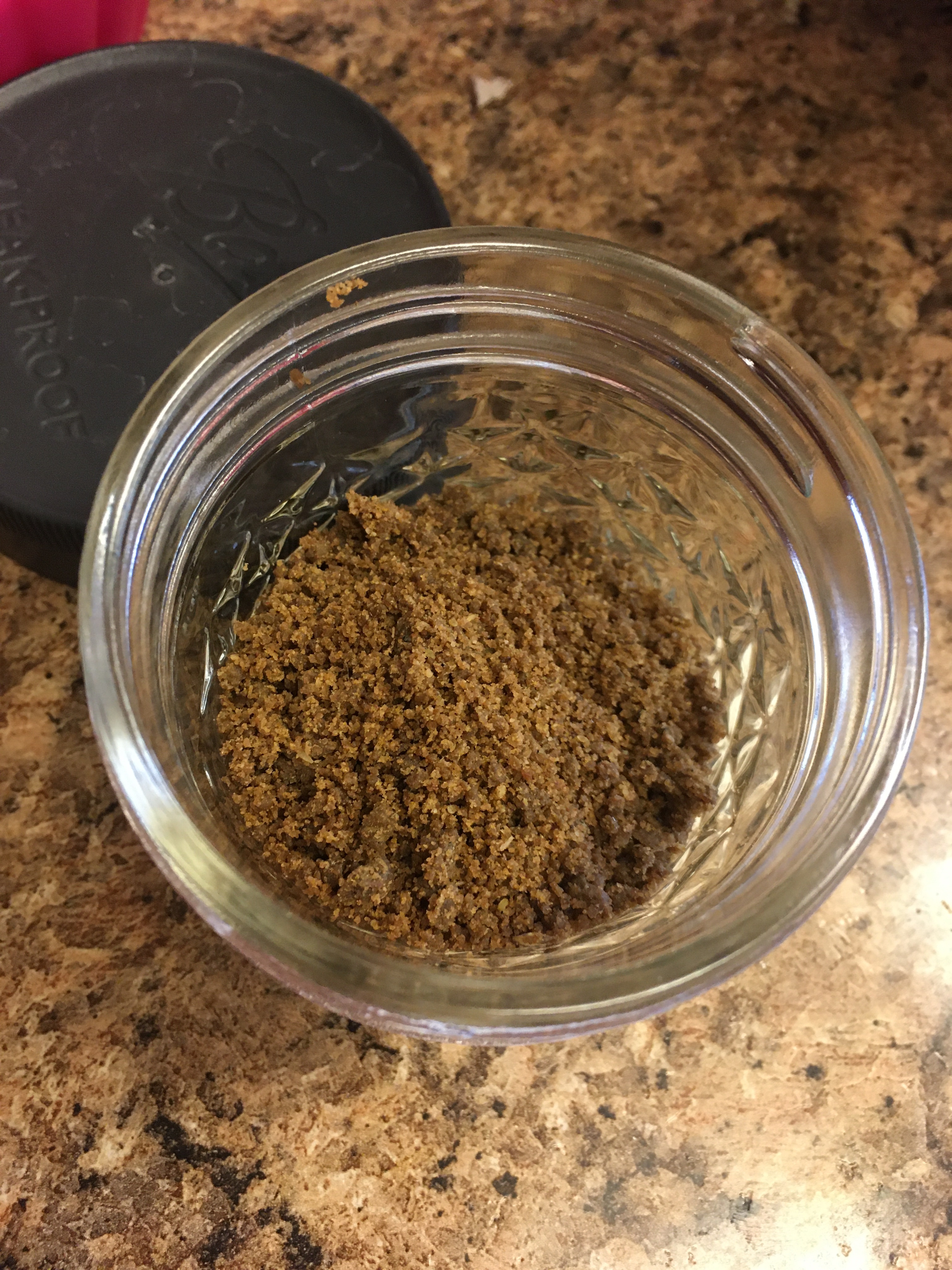
To help finicky cats who have been eating commercial cat food for many years try to Coat the meat pieces in either broken dry kibbles they normally eat, parmesan cheese, or FortiFlora. FortiFlora is a probiotic that also works at enticing cats into eating. Try Crushing their cat kibble in a plastic bread bag using a mallet or meat tenderizer ontop of a cutting board and sprinkle into the food as the familiar smell will help entice them into eating the new food. Do not use excessive Parmesan cheese or for long periods of time as the dairy can cause diarrhea.
When transitioning to homemade cat food, with any degree of raw meat, from commercial foods it’s a good idea to use probiotics to prevent diarrhea from potential contaminants like e-coli or salmonella. Two commonly used probiotics in cat food are fortiflora and proviable.
Large Batch Making- Meat Grinder and Bones Required
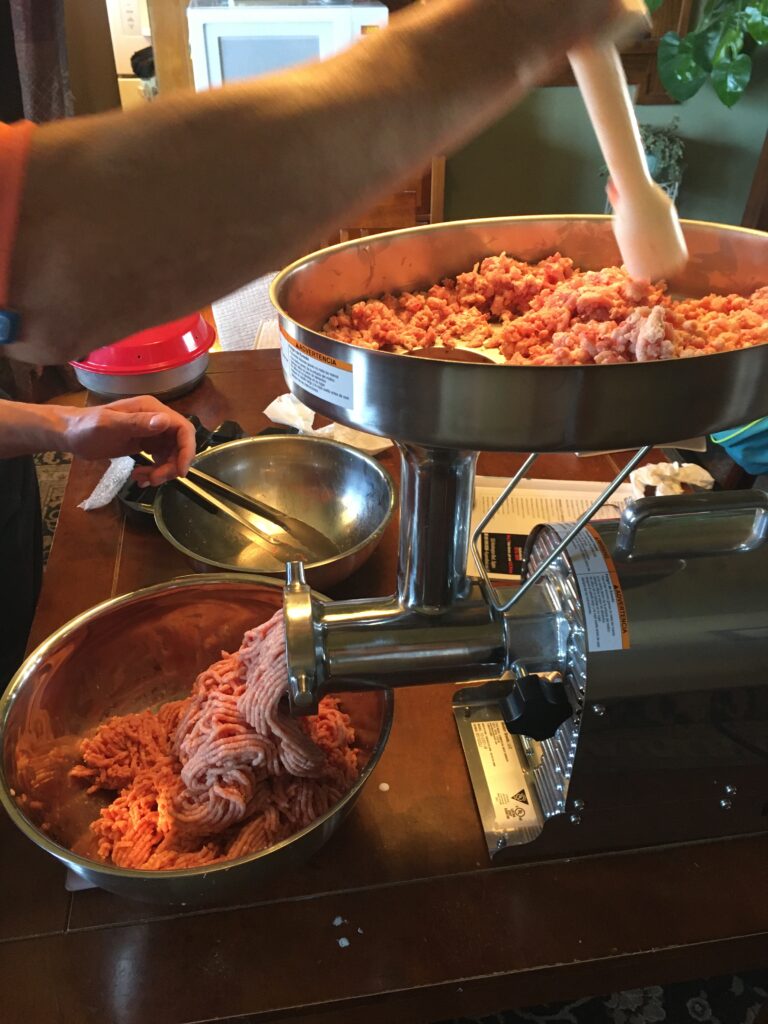
This recipe is copied from Lisa A. Pierson, DVM website with the addition of manganese.
Buying large batch quantity supplements $41.00 and Free S&H if buying during a sale. Another option for larger bulk supplements is to buy from Bulk supply.com.
⭐️ Recipe Calculator ⭐️
The calculator uses chicken hearts in its calculations- can substitute with Taurine when fresh hearts are not available
LARGE 10lb batch making recipe is posted!
4-6 ounces/day good to feeds 1 cat 10-14 days
- 3 pounds of poultry thigh meat/bones/skin
- OR
- 2 – 2.25 lbs of whole carcass ground rabbit + 0.75 – 1 lbs of boneless chicken or turkey meat/skin/fat
CAUTION: After removing the skin and bones you will need to add extra dark meat. So pick up an supplemental protein 2-3lbs of your choice boneless skinless chicken thighs, wild caught salmon, wild caught Cod, or rabbit.
If your cat is thin and needs the extra calories, leave all of the skin on the meat. If your cat is chubby or has had pancreatitis, remove ~80% of the skin. (Some cats that have had pancreatitis do better on a low fat diet.) If he is just right, remove ~50% of the skin.
Can use 20% skin for active healthy cats…
Step #1. Cook Bone in chicken thighs and chicken liver and then debone and remove skin. 50% bones and skin
Step #2. Remove the pre-determined amount of skin and bones.
First cook the meat, this also makes it is easier and warmer to handle then remove the excess bones, remove 30%- 50% of the bones** . Souse a kitchen scale to weigh out the necessary amount.
- Bake (at 350 degrees) the chicken/turkey thighs leaving ~50% of the thigh meat raw. (The time needed varies depending on how thick the thighs are but is usually ~15 – 20 minutes, give or take.) Add all of the fat drippings to the ground meat/bones/skin/liver/eggs.
- Bake chicken liver for 10 minutes, remove from heat and stir, return to oven for 10 additional minutes.
- Cook the liver more than the chicken thighs because bacteria does not reside in the depths of the thigh meat but, instead, lives on the surface. The liver, on the other hand, has a higher chance of having bacterial contamination throughout. Plus, one of my own cats because extremely ill (horrible vomiting and diarrhea) after eating raw liver that was fed within 1 hour of being purchased….with current/fresh dating.
Step #3. Grind meat and Cut cooked chunks of partially cooked meat 1/2” or smaller.
Step #4. In a separate bowl mix supplements with water until dissolved.
Taurine –Taurine Melting point is 644 degrees F.
Taurine has a very high melting point, this means it can withstand the temperatures of partial cooking for the sake of this recipe. It is IMPORTANT to pour the liquids from the cooking dish into the bowl of ground meat. Since Taurine is water soluble it can leak out of the meat in liquid form.
Never cook or purée supplements with meat due to denaturing. Lastly the vitamins can be lost by sticking to the meat grinder.
- 1 cup filtered water or, preferably, more if your cat will eat it with more water – increased dietary water helps keep the urinary tract healthy and unobstructed with debris (crystals, mucus, protein, white blood cells, red blood cells, etc.)
- 2 eggs – (Source of Choline) use the yolk raw. Optional: lightly cook the egg yolk and white (soft boiling them for ~3-4 minutes) – remove shell. Omit eggs for cats with GI issues and food allergies.
- Fish Oil 5000 – 10,000 mg (5-10 capsules of the average 1,000 mg capsule) – I use 10 capsules for my cats. Fish oil is a good source of essential fatty acids – note that this is increased from the original amount of 2,000 mg – if your cat does not like fish, it is ok to use only 2,000 mg. Do NOT use cod liver oil! There is already plenty of vitamin A and D in the liver we are using.
- Vitamin E – 400 IU (268 mg) (powdered E in capsules is the easiest to use but gunks up into a thick sticky consists chiefly that doesn’t dissolve.)
- Vitamin B-complex 50 – 1 capsule or tablet but if you have a picky cat, you should start with only 1/2 capsule or tablet for a total of 25 mg; you can try to increase from there for the next batch but if you determine that your cat is turned off from the food with more than 25 mg, then just leave it at 25 mg.
- 2,000 mg taurine (use powdered – either in capsules or loose)
- 1 tsp Morton Lite (or Windsor Half and Half for Canadian residents) salt with iodine when using all chicken but use 1/2 tsp when using rabbit + chicken (contains potassium and sodium – make sure that it contains iodine – mixture of sodium and potassium versus table salt which is all sodium. Allows for measurable consistent iodine vs kelp supplements which are unknown.
- Liver – source of vitamin A and Taurine
- ground rabbit (which includes liver) from wholefoods4pets.com, do not add additional liver.
- Chicken legs, thighs or a whole chicken carcass minus the organs, add 3-4 ounces of chicken livers per 3 lb of meat/bones/skin.
- Psyllium for added fiber to prevent constipation 1/4 tsp once daily to meal or 3tsp to batch.
- Manganese 10mg manganese 1/2 tab per 3lbs
Step #5. Add supplement to meat and mix
Step #6. Preserve food in the freezer in preferred containers such as in an ice cube tray and then moving them to a silicone stash bag, or prepare them for pressure canning. If pressure canning you can follow instructions per the National Center for Home Food Preservation website. If you are pressure canning do not ever discard any water from the jars as this contains 50-70% of the taurine.
An alternative method is to freeze dry the food by using a home freeze dryer. See my 10lb cat food instructions for freeze drying in a separate post.
Constipation
This entire section has been sourced from Lisa A. Pierson, DVM
- Miralax (or its generic equivalent): Again, it increases fecal water content without adding bulk to the stool. Most feline veterinary practitioners like using Miralax much better than lactulose which also adds water but not bulk. Miralax is tasteless and can be mixed with the food. This is much better than trying to get sweet, sticky lactulose into a cat!
Start with 1/16 to 1/8 tsp once or twice-daily mixed into the food and increase from there to get the desired fecal consistency. I usually start with 1/16 tsp in the first few meals to make sure that they eat it. Most cats do well on no more than 1/4 tsp twice-daily but it is safe to go higher. If your cat’s stools are too loose, lower the dosage.
- Soluble fiber such as guar gum: Start with 1/16 tsp once or twice-daily (use one half of a 1/8 tsp measuring spoon) – add extra water (1-2 tablespoons) to the meal or an amount just short of your cat refusing to eat the food. Fiber absorbs water like a sponge and then swells thereby adding bulk to the feces. Therefore, we want to add extra water to the food.
You can purchase guar gum from Whole Foods Market or online here.
Many people use pumpkin (canned – plain….not pumpkin pie filling with added sugar and spices) but some cats do not like it. Lisa A. Pierson, DVM prefers guar gum because it is more convenient and is not an unnecessary source of carbohydrates for our carnivores. It lasts forever (it is not perishable) and most cats readily eat it when mixed into their food. If you want to try pumpkin, use 1/2 – 1 teaspoon 2-3 times per day mixed into their food. Some people freeze the pumpkin in ice cube trays for convenience.
Psyllium husk powder is also an option. Start with 1/4 tsp once or twice daily added directly to the food and increase or decrease from there as needed. If adding into the batch use 4tsp.
**Raw Food Contains too Much Bone.
Many raw cat foods, particularly commercially-sold products, contain more bone than is necessary. It’s generally agreed that species-appropriate foods follow the 83: 7: 5: 5 rule, indicating 83% meat, fat, skin, sinew, connective tissue, and heart, 7% edible bone, 5% liver, and 5% other secreting organs.
Freeze Drying
I have a medium freeze dryer which allows me to do a maximum of 10lbs per batch cycle. I filled my trays and put them in the freezer for a 6+ hours usually over night.
⛔️⚠️to make this process easier I bought tray dividers to add to the cycle process and it’s so much better than hand cutting the meat and has drastically improved drying! Scoring the meat will allow for better freeze drying and reduce the likelihood of retained moisture and thus the need for less extra dry time. I allow my pet food to fully freeze over night.
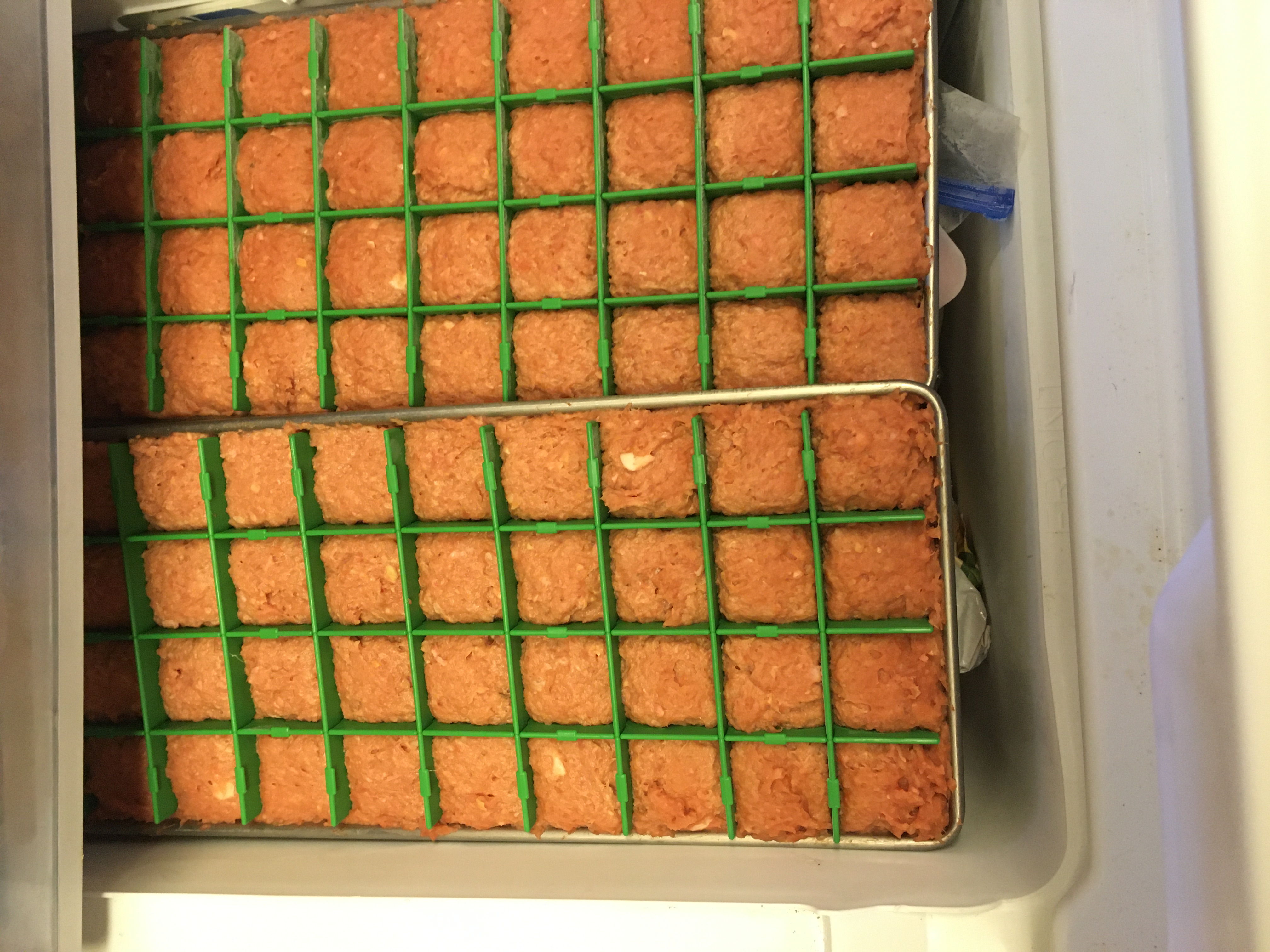
I was finally able to fill my 1/2 gallon canning jars and 1 gallon mylar bags and start feeding! I like the jars for more immediate use. I also bought an airscape kilo for food used daily
Sources
- Source
- https://allaboutcats.com/making-cat-food-homemade
- 5 mistakes with homemade cat food
- http://www.catnutrition.org/recipes.html
- https://www.caticles.com/benefits-of-homemade-cat-food/#recipes
- https://tcfeline.com/store-2/
- https://feline-nutrition.org/nutrition/making-raw-cat-food-for-do-it-yourselfers